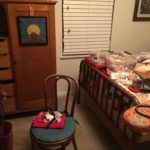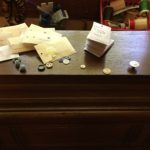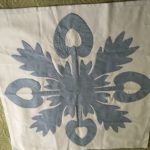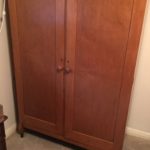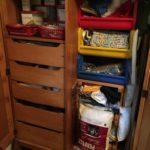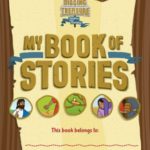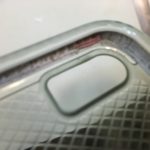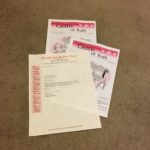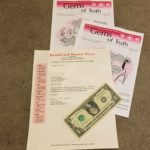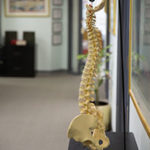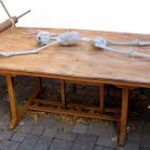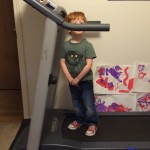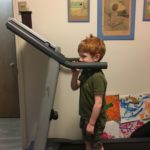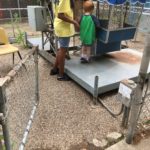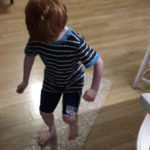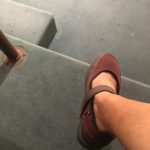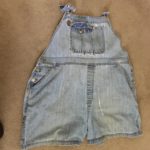I can’t actually whistle. But sometimes I sing while I work. And, a lot of the time, I listen to an audio book while I work, which means I sometimes have to go back and relisten to whole chapters, because I’ve been thinking about what I’m working on, instead of listening, and I discover I have no idea what’s going on, in that audio book that’s been pouring into my ears.
Meanwhile, my sleep cycles have been rather awry lately. I think it was Bible School. We have Bible School (which we call Children’s Bible Club) in the evenings. I’m accustomed to being more busy and active in the daytime. I work in the yard. I work in the house. I walk on the treadmill. In the evenings, I’m more likely to be doing stuff on the computer or watching television or reading (and maybe I walk on the treadmill). Quieter stuff. And I stop drinking tea at 6:00 p.m.
Even when Peter’s here (which he happened to be, during Bible School), I’m not at all busy with him later in the day. The instant David walks in the door after work each evening, Peter becomes an appendage, and I might as well not be here at all. So when he’s here, my daytimes may be busy, but my evenings are restful. I’m thinking, then, that the evening-time hubbub of Bible School a couple of weeks ago sort of re-set my regular rhythms, and I’m having trouble sleeping. Or, staying asleep.
Tuesday morning, verrrrrrry early … well, it was really more like Monday night still, I woke up and could not get back to sleep. And, I kept thinking about what all I needed to get done before holiday company arrives on Saturday, and what sort of food preparation and house cleaning and laundry and general readiness and, well, you understand. So, I gave up and got up.
I didn’t necessarily want to spend time on the computer, reading Facebook posts or doing crossword puzzles or jigsaw puzzles, because screen time is supposed to negatively effect sleep. I didn’t want to do anything noisy (like getting a jumpstart on the vacuuming), because David might find that annoying, in the middle of the night. But, there was some cleaning up that I should do in the guest/sewing/overflow stuff room. I went there and shut the door and turned on the light, and thought about what a disorganized space the armoire was.
I keep my sewing stuff in there. Years (and years and years) ago, I got a set of Tupperware containers that I use to keep all the sewing stuff organized. Sort of. I find myself searching among the containers for what I need, and the boxes get disorganized and I can’t always find what I want, and things get stuffed in anywhere, and, so on and so on. Also, there was stuff in a chair and on the sewing machine and on the bed, and I was feeling frazzled about it.
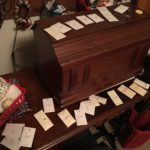
I found all sorts of stuff, like these tiny envelopes that have spare buttons from clothes I’ve bought. Very few of them are labeled, so I don’t know what clothes they belong to, or even if they belong to clothes I still have.
So, at 1:15 a.m. on Tuesday, I took all those containers out of the armoire and got to work. I opened them all up and spread everything out on the bed. I re-arranged and made sure that the same things were together. (No zippers with the interfacing. No elastic with the ribbon.) I tried to be bold about getting rid of things I don’t use or want or like any more. I consolidated things. I threw away things. I made a Goodwill bag. And long before I finished, I became really sleepy and thought I should go on to bed while the urge compelled me to, and while I could get at least a little bit of sleep.
I had to put the project on hold for a little while, trying to get some other tasks done (like making homemade ice cream for July 4th!) and getting other spaces in the house also ready for company. But I got back to it Thursday afternoon. Everything got tucked away into a container. I stacked them all in the armoire, and remembered how frustrating it has been to find exactly what I was looking for. So, I did what I’ve planned to do for, oh, fifteen years? I labeled the containers. Yes, I know, it seems like a simple thing (and it was). I just never got around to it.
- All the boxes, stacked nicely on the shelf.
- All the boxes, stacked nicely on the shelf . . . with labels!
- Little envelopes, labeled with the clothing to which the buttons belong, buttons to clothes I no longer have that will go into the “loose buttons” container (for other projects), and empty envelopes on their way to the recycle bin
As I went through, somewhat, the drawers, I found this Hawaiian quilt square that I started (and I am not exaggerating) forty-four years ago. The figure is appliqued on and I had begun to quilt it, but the top got skewed from the lining, and I put it away and didn’t get back to it. A few years ago, I pulled the quilting out. Monday night, I separated the batting from the top and bottom. I threw out the old batting and ironed the front and backing. It’s ready for me to think about starting over.
- The quilting needle was still in the backing, waiting for me to pick it up again and get back to work. Probably, I should go ahead and get a fresh needle..
The bird’s eye maple armoire is the only piece of furniture that I remember from my maternal grandparents’ home. I’m very glad to have it, for sentimental reasons, and because it does such a good job of keeping all my sewing stuff organized!
Everything on earth has it’s own time and its own season. There is a time . . .
for throwing stones
and gathering stones,
embracing and parting.
Ecclesiastes 3:1, 2a, 5 (Contemporary English Version)
I’ve been doing some throwing and gathering. In just a couple of days, there’ll be embracing, and then, a while later, some parting. And, every now and then, I’ll go and look in the armoire, to see how nice it looks!


